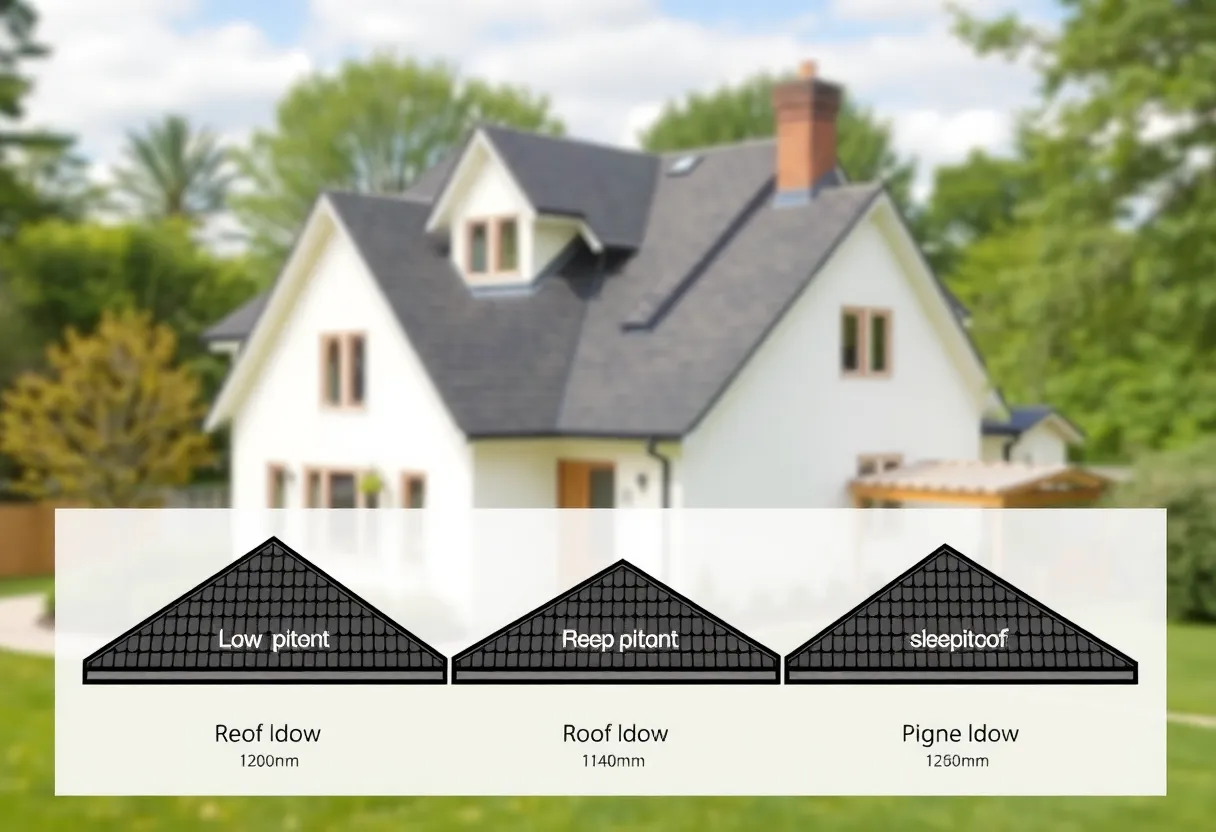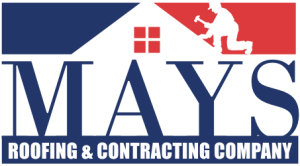

Understanding the types of roof pitches: low, medium, and steep.
Article Sponsored by:
Mays Contracting is more than just a roofing company; it’s a family legacy built on trust and quality. Founded in 1979, we’ve been serving the community for over four decades. Our story began with a simple vision: to provide exceptional roofing services for both residential and commercial properties. This vision has guided us ever since, as we’ve grown from a small, family-run operation to a trusted name in the industry.
Roof pitch plays a significant role in determining the overall system and aesthetics of a home. It affects not only the style and appearance of the house but also its functionality and longevity. This article delves into the intricacies of roof pitch, how to measure it, and why it matters to homeowners.
Roof pitch is defined as the steepness or angle of a roof. It is typically expressed as a ratio of the vertical rise to the horizontal run. For instance, a pitch ratio of 4:12 means that the roof rises four units for every twelve units of horizontal distance covered. This measurement helps establish the roof’s profile and drainage capabilities.
Understanding roof pitch is essential for several reasons:
To accurately assess roof pitch, specific tools and methods can be employed. Here’s how to measure it effectively:
Roof pitches can be categorized into three primary types:
Low pitch roofs generally have a ratio of 2:12 to 4:12. These types of roofs may require special materials to prevent water retention and leaks, as their slope isn’t steep enough to facilitate effective drainage.
Medium pitch roofs usually range from 4:12 to 9:12. This category is most common in residential homes, as it balances drainage and aesthetic appeal effectively.
Steep pitch roofs have a ratio greater than 9:12. These roofs shed water efficiently and are often found in regions that experience heavy snowfall or rainfall. However, their steep angle can complicate installation and maintenance activities.
In addition to affecting aesthetics and structure, roof pitch has broader implications that homeowners should consider:
The pitch of a roof directly influences how well it withstands various weather conditions. Steeper roofs allow for better water run-off, which is crucial in areas prone to heavy rain or snow. Not only does this reduce the likelihood of moisture damage, but it also minimizes ice damming in colder climates.
Choosing the right materials is crucial when selecting a roof pitch. Asphalt shingles, for instance, are suitable for low to mid-pitch roofs, while metal roofing can be utilized effectively on steeper pitches. Certain materials may not perform adequately on low-pitched roofs, highlighting the importance of understanding pitch when making choices.
The design of a roof pitch can significantly affect insulation and ventilation in the home. Steeper roofs often include more attic space, allowing for better airflow and ventilation which contributes to energy efficiency. Proper insulation helps in maintaining temperature balance throughout the home.
Maintenance activities can be challenging depending on the roof pitch. Steeper roofs can be more hazardous for tasks such as cleaning gutters or performing repairs. Homeowners need to consider whether they can safely conduct maintenance or require professional services.
Despite the clear importance of understanding roof pitch, several myths persist:
Not all structures require a steep roof. Low-pitched roofs can be perfectly functional in many regions, as long as they are designed with appropriate materials and drainage solutions.
This is misleading. While aesthetics is a factor, roof pitch influences many critical aspects including durability, weather resistance, and overall performance. It’s a multi-dimensional consideration.
While changing a roof pitch is more involved than simply selecting different shingles, it is feasible. Homeowners should engage professionals to assess the implications and feasibility of altering their roof’s pitch.
Understanding roof pitch is essential for homeowners aiming to maintain a functional and appealing structure. From influencing aesthetics and structural integrity to impacting material selection and energy efficiency, pitch plays a pivotal role. Homeowners should prioritize measuring and understanding their roof pitch as it has lasting ramifications for the health of their home. In summary:
In the complex domain of homeownership, paying attention to roof pitch is not just a cosmetic consideration—it’s a crucial element in safeguarding your investment.

Quality Roof Construction and Repair in Lexington, Richland, Newberry and Laurens Counties for over 40 Years.
How Can You Use Behavioral Science to Enhance Your Digital Marketing Strategy? Digital marketing is…
News Summary Wesley Bryan, a prominent golfer, has received an indefinite suspension from the PGA…
News Summary Dustin Johnson, a former golf champion, faces challenges in his performance as he…
News Summary In a surprising development, Wesley Bryan has been suspended by the PGA Tour…
News Summary The Summerville community is heartbroken following the untimely passing of 23-year-old Jerad Devin…
News Summary Residents in Greenville and Pickens Counties are facing urgent evacuations as the South…